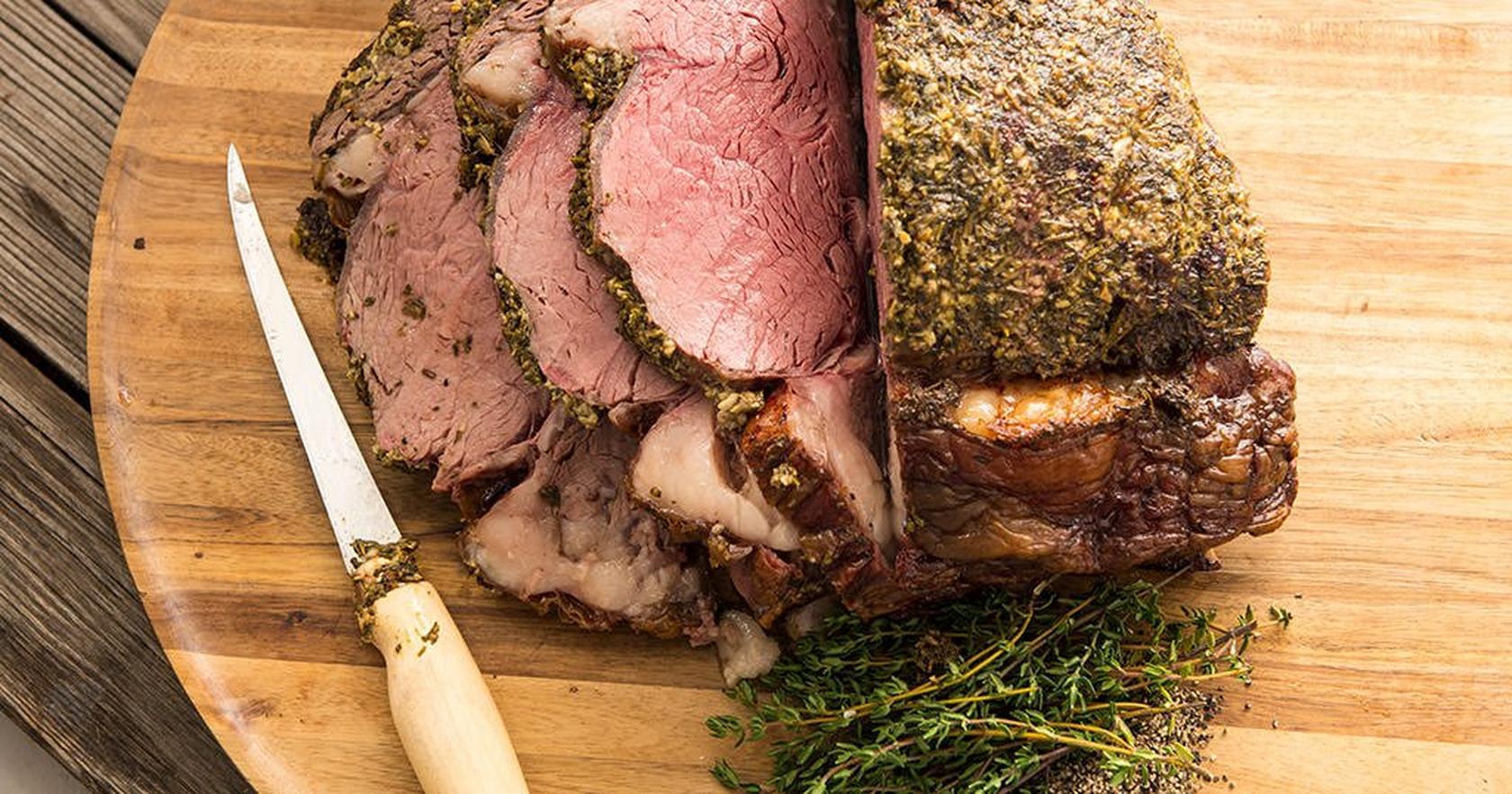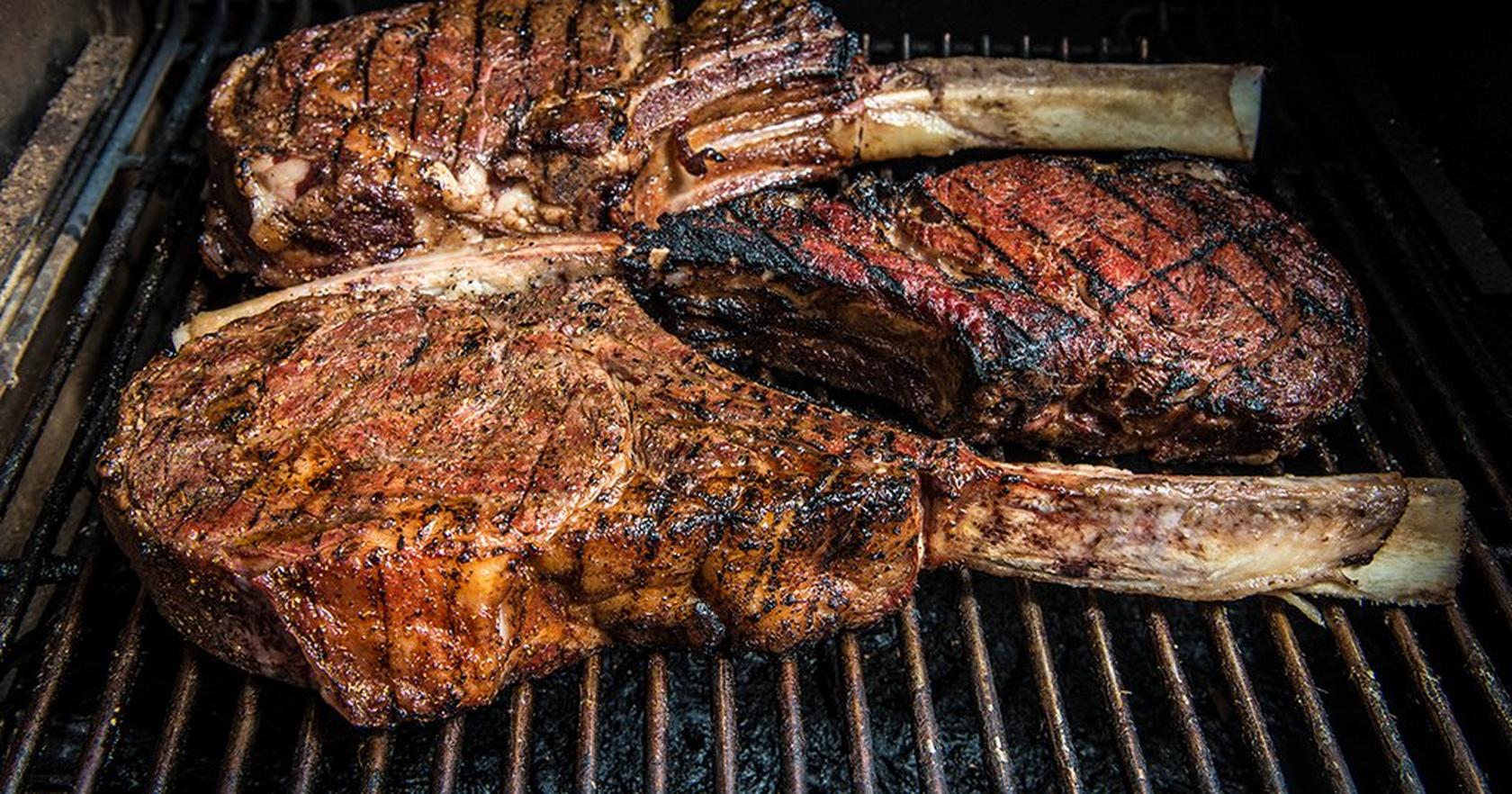
Prime rib is a favorite for special occasions for a reason. But what is prime rib? Is prime rib beef or pork? What makes smoked prime rib on the Traeger so special? If you've asked yourself those questions about this epic meat cut, then you're in the right place. Read on to find out everything about this flavorful roast.
What is Prime Rib?
When you hear the term ribs, you likely picture the kind that you eat with your hands. Prime rib, however, is actually a beef roast, a big hunk of beef that sits atop rib bones. Indeed, when it comes to rib roast vs prime rib, the cut is just as often called a prime roast or a standing rib roast.
To make this title even more confusing, the term “prime” does not refer to the USDA beef grading system but to the fact that this is a primal cut of beef, meaning it’s one of the first cuts of meat separated from the animal during butchering.
A prime rib roast consists of a large round of meat, also called the eye, which is attached to the rib bones. It’s cut from ribs 6 through 12 of the cow. The earlier ribs are from the chuck primal, and the 13th is part of the loin.
A whole standing rib roast would have 7 ribs total, but most often a standing rib roast will be cut into smaller portions, usually between 2 and 4 ribs.
What is the Best Cut of Prime Rib?
When it comes to determining the best cut of prime ribs, the answer is a straightforward "it depends." Choosing a roast closer to the chuck end (also known as the second cut) ensures a bolder beef flavor, though it may sacrifice some tenderness compared to the first cut from ribs 9-12 (small end, loin end). While the first cut may come with a higher price tag, it boasts more lean meat and less fat.
On the other hand, fans of the second cut appreciate its abundance of fat, especially when slow-cooked to maintain its delightful moisture. So, when asking "what is the best cut of prime rib," the decision, if you find yourself at the butcher's, ultimately lies in your hands.
Bone-In or Boneless?
You can find prime rib both bone-in and boneless. A boneless prime rib is often called a ribeye roast adding another layer to the question of "what is prime rib." Though both are delicious, most professional cooks will recommend cooking the roast with the ribs intact to help insulate the meat and keep it moist. But a boneless roast, such as Garlic & Herb Traeger Rib Roat, is easier to slice. For this reason, many recipes, including Meat Church Prime Rib advise you to remove the bones in one piece before cooking but then tie the rib plate back in place to get the best of both worlds. Once done cooking you simply cut them back off and you not only have an easy to slice, but the cooked ribs make for excellent nibbling.
Is Prime Rib the Same As Rib Eye Steak?
The answer here is both yes and no. Rib eye steaks are cut from that same primal cut. The difference comes in the cooking. If you have a slice of prime rib on your plate, it was cooked first and then sliced. A rib eye steak is cooked singly from raw and so will likely have more seared sides to it.

What Makes Prime Rib the Best Roast?
Prime rib on the pellet grill is unbeatable for many reasons. For one, the rib primal section where this meat cut comes from is one of the most tender parts of the cow so it's extremely tender and juicy.
It is also super easy to cook. Because of the high fat content, not only can you do a simple seasoning, but you can cook it low and slow followed by a high-temperature sear to create a perfect crust. No extended prep work or grill hovering is needed.
Traeger prime rib is also great for guests who prefer different doneness levels. While medium rare (125-130°F) is the best level to cook your roast at, you can also get rare, medium, or well-done meat in a single roast.
Lastly, it complements a variety of sides, from creamy mashed potatoes to roasted Brussels sprouts. Discover what other sides to serve with prime rib by reading our article.
What Does Prime Rib Taste Like?
Of course, the biggest reason prime rib is the king of beef cuts is because of its revolutionary taste. Prime rib is rich, beefy, and packed with flavor that comes from its generous marbling. Each bite is tender, juicy, and melts in your mouth, offering a luxurious, buttery texture. The savory crust, seasoned to perfection and roasted to a smoky, golden brown, adds an irresistible layer of bold flavor. This combination of rich beefiness, velvety texture, and smoky depth makes prime rib a true showstopper at any meal.
How To Cook Prime Rib?
If you're wondering how to cook prime rib, the answer is simple. Smoked prime rib is the ultimate way to ensure you have a tender and flavorful rib roast.
While each recipe is different, some good temperatures and prime rib cooking times to keep in mind are these:
- 250°F: 30-35 minutes per pound.
- 225°F: 35-40 minutes per pound (low-and-slow for maximum smoke absorption; use Super Smoke if available).
- 275°F: 20-25 minutes per pound (faster option)
- 300°F: 15-20 minutes per pound (quickest option).
Pro Tip: Make sure to have an internal meat thermometer like the MEATER so you can get the best prime rib recipe (AKA a perfect 125°F for medium-rare).
You will also want to consider the seasonings you want for your prime rib. A spice rub will add an extra boost of flavor. Our suggestion? Our Prime Rib Rub or Coffee Rub will give your roast added flavor without taking away from the meat itself.
How to Reheat Prime Rib
A Traeger prime rib recipe is likely to feature a fairly large roast which means lots of leftovers. If you want to transform your leftover prime rib, we suggest using the wood pellet grill. Set your Traeger to 250°F and reheat for about 20-30 minutes. If you go this route, make sure to wrap the prime rib in foil with a splash of beef broth, au jus, or butter to keep it moist.
Traeger Prime Rib Recipe
by Traeger Kitchen
5 Reviews
Prep Time
15 Min
Cook Time
4 Hr
15 Min
Serves
8
Pellets
Pecan
Seasoned with simple herbs, then smoked and roasted to perfection, this winning Traeger prime rib recipe delivers every single time.
Ingredients
main
| 1 | (8-10 lb) 4-bone prime rib roast |
| 5 Tablespoon | kosher salt |
| 5 Tablespoon | freshly ground black pepper |
| 3 Tablespoon | chopped fresh thyme leaves |
| 3 Tablespoon | chopped fresh rosemary leaves |
1
When ready to cook, set the Traeger temperature to 250℉ and preheat with the lid closed for 15 minutes.
2
While the grill preheats, trim any excess fat off the roast.
3
In a small bowl, combine the salt, pepper, thyme, and rosemary. Rub all over the roast.
4
Insert the probe into the center of the roast, avoiding the bones and any large pockets of fat. Place the roast directly on the grill grates, close the lid, and cook until the internal temperature reaches 120℉, about 4 hours. Remove the roast from the grill and let rest for 20 minutes.
5
While the roast rests, increase the Traeger temperature to 450°F and preheat with the lid closed. Return the roast to the grill, close the lid, and cook, rotating halfway, until the internal temperature reaches 130°F for medium-rare or your desired temperature, about 15 minutes.
6
Remove the roast from the grill and let rest for 30 minutes before slicing. Enjoy!